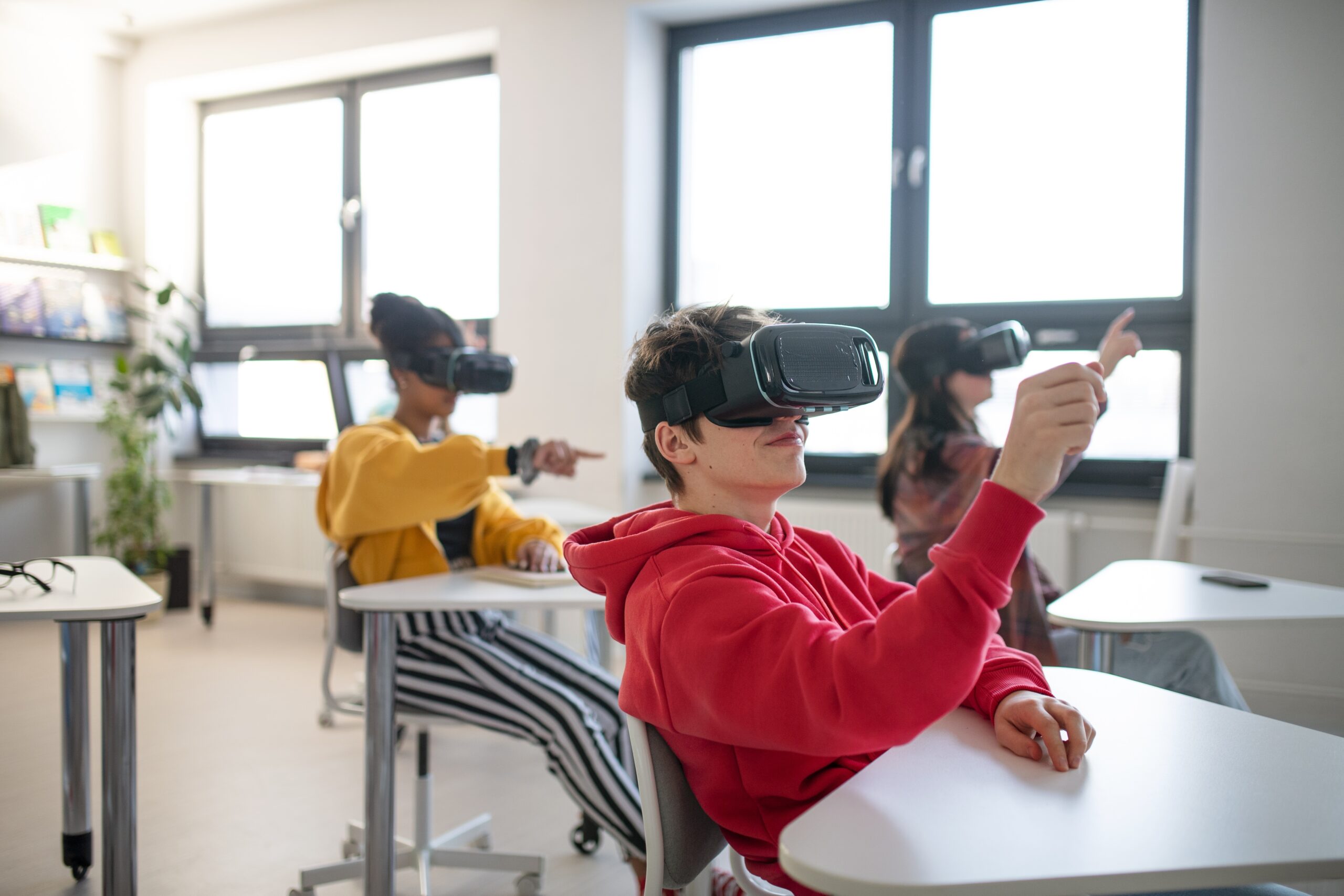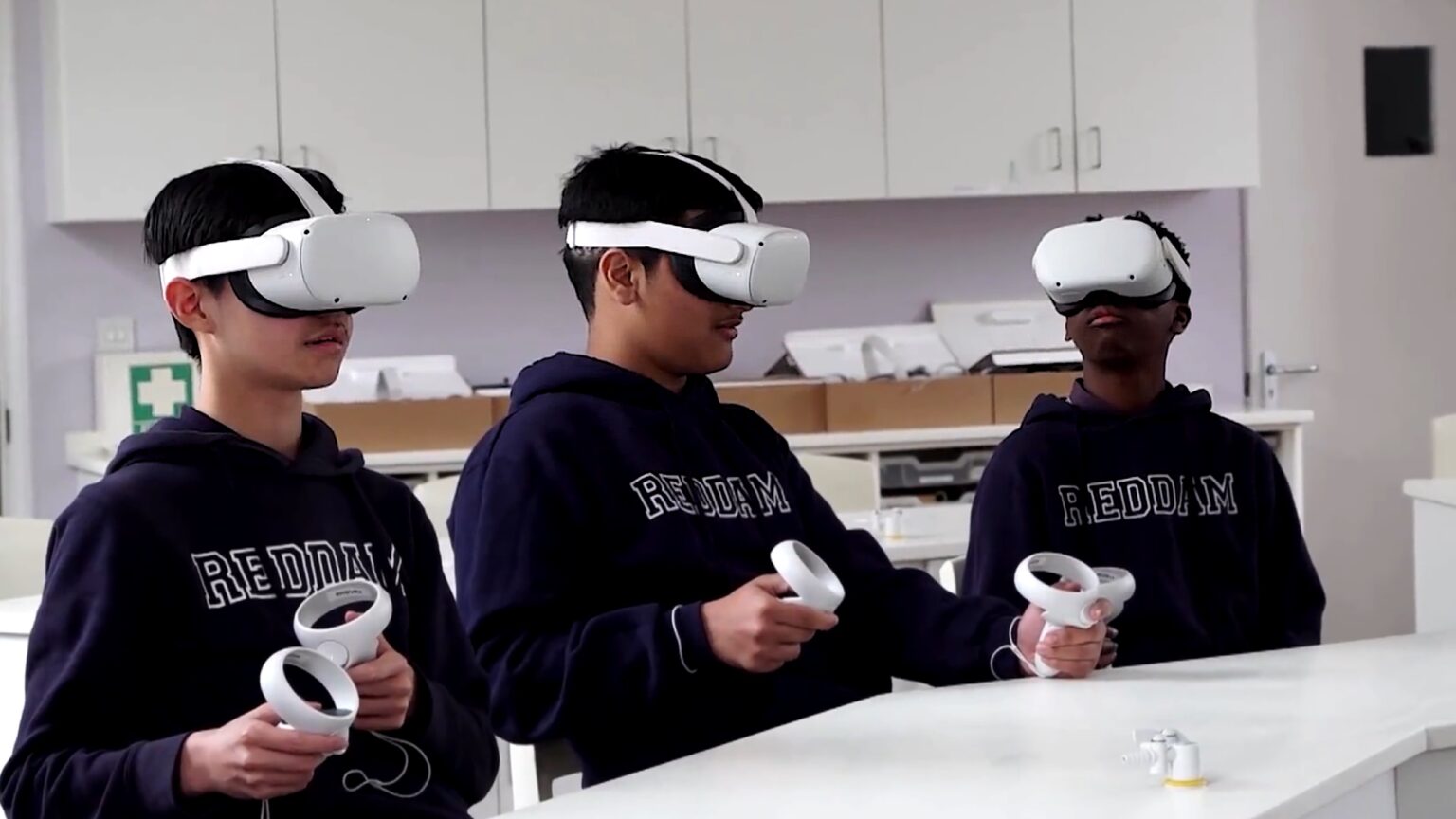Reddam House schools are leading the charge in a rapidly evolving educational landscape by seamlessly integrating virtual reality (VR) and the metaverse into their classrooms.
This approach, which has already succeeded in five international schools, is now being embraced by 17 other Reddam campuses globally.
Reddam House Helderfontein and Waterfall, two local schools within the Inspired Education Group, are at the forefront of this educational revolution, leveraging VR headsets and the metaverse to immerse students in a world of learning experiences.
WATCH: ‘Metaverse’ students at Reddam House school in Berkshire, England, have been taking part in VR subjects, learning about science, history, art and geography pic.twitter.com/L1zeZF3DMN
— Reuters (@Reuters) May 28, 2023
Education at Reddam House has taken a bold leap into the digital era, reshaping how students engage with their studies.
Enhanced learning through immersion
VR and the metaverse, when combined, open doors to previously unattainable learning experiences. Notably, students at Reddam House Helderfontein and Waterfall are donning VR headsets to conduct science experiments, explore iconic landmarks, and delve into the inner workings of volcanoes. This immersive approach resonates with the digital-native generation, infusing a profound love and fascination for learning.
Per the reports, one of the advantages of being part of an international network of schools is the ability to share and enhance the best educational practices globally. Graham Bennetts, executive head of Reddam House Helderfontein, emphasizes the significance of this collaboration. In contrast, Quinton Pascoe, executive head of Reddam House Waterfall, underscores the importance of creating interactive environments that deeply engage students.
Paving the way for the future
Reddam House’s adoption of VR and the metaverse is a testament to their commitment to ushering in the future of education, where technology takes center stage in learning and exploration. By leveraging these cutting-edge tools, students are empowered to transcend traditional boundaries and experience education in novel and exciting ways.
Across the globe, in Saudi Arabia, students at the College of Architecture and Planning at King Abdulaziz University are making waves with their project, “Building in the Metaverse.” This project, created by students Ahmed Khoja and Abdulaziz Hashem, harnesses the power of virtual reality technology to craft fully immersive educational environments.
Students at the College of Architecture and Planning @kauweb (King Abdulaziz University) have unveiled their latest project called ‘Building in the #Metaverse’ https://t.co/jQiw8FsoGf pic.twitter.com/EvsUM10FPK
— Arab News (@arabnews) September 25, 2023
The metaverse’s potential in education
While colleges and universities have yet to fully embrace the concept, the potential for creating virtual classrooms and lecture halls in the metaverse is immense. This aligns perfectly with Saudi Arabia’s Vision 2030 plan, which aims to enhance the quality of life, bolster cultural infrastructure, boost tourism, and elevate Saudi artists onto the global stage.
Hashem and Khoja acknowledge the challenges but stress that these technologies could significantly reduce material costs, making quality education more accessible.
Interactive learning environments
Students can interact with 3D models, simulations, and interactive content within these virtual spaces, deepening their understanding of complex subjects. According to experts, such hands-on experiences foster active engagement and enhance comprehension.
The metaverse transcends geographical boundaries, allowing students and instructors to connect and collaborate worldwide. Virtual classrooms bring diverse perspectives together, enriching the learning environment and promoting global awareness.

A glimpse into metaverse classrooms
Imagine a typical metaverse classroom—a virtual space replicating a physical classroom with virtual desks, chairs, and whiteboards. Here, teachers can deliver virtual lectures while students participate by raising their virtual hands to ask questions and engage in discussions.
Students can even create virtual avatars with customizable features. The metaverse classroom can also incorporate immersive elements such as virtual simulations, field trips, and interactive lessons, enhancing the learning experience.









 and then
and then